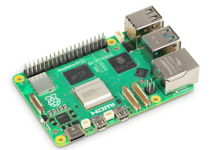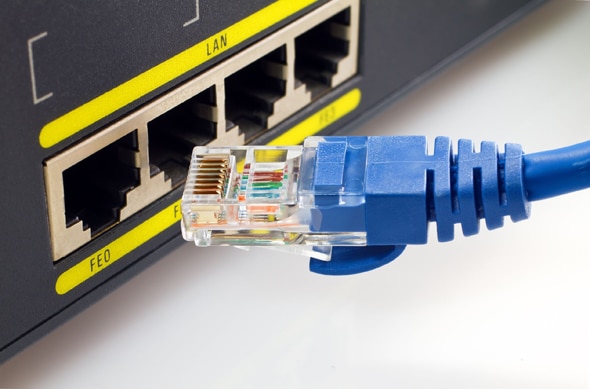Let’s delve into a wide array of open source tools designed to address critical areas such as connectivity testing, traffic monitoring, security, automation, and advanced networking. These tools empower network professionals to enhance reliability, fortify security, and streamline operations by leveraging the flexibility and innovation of open source technology.
Network administrators are the backbone of IT infrastructure, responsible for ensuring seamless connectivity, network security, and optimal performance. They manage network devices, monitor traffic, and troubleshoot issues to maintain uninterrupted service delivery. In today’s interconnected world, their role extends to implementing robust security measures, optimising bandwidth utilisation, and supporting business-critical applications.
The key responsibilities of network administrators are:
- Designing and maintaining network architecture to meet organisational needs.
- Proactively identifying and resolving network issues to minimise downtime.
- Implementing security protocols to protect sensitive data and prevent unauthorised access.
- Collaborating with IT teams to deploy scalable and efficient solutions.
Why open source tools are essential for network management
Open source tools have revolutionised network management by providing cost-effective, flexible, and powerful solutions. Unlike proprietary software, open source tools offer transparency, community-driven support, and the ability to customise features to meet specific organisational needs.
The key advantages of open source tools are:
Cost efficiency
Open source tools eliminate licensing fees, making them accessible to organisations of all sizes.
Flexibility and customisation
Administrators can modify tools to fit unique network requirements.
Community support
Open source projects benefit from active communities that contribute to updates, troubleshooting, and enhancements.
Wide range of applications
From monitoring and security to automation and diagnostics, open source tools cover every aspect of network management.
Basic network connectivity tools
Basic network connectivity tools are vital for ensuring the smooth operation of IT infrastructure. They help administrators test connectivity, diagnose DNS issues, and verify routing and gateway configurations. These tools not only ensure that the network is functioning optimally but also provide insights into potential problems before they escalate.
Key questions administrators face daily with respect to network connectivity are:
- Is the network connectivity consistent across all devices and critical nodes?
- Are there any routing or DNS issues causing disruptions in communication?
Testing connectivity
ping: The ping tool sends Internet Control Message Protocol (ICMP) echo requests to a target host and waits for replies. It is essential for testing if a device is reachable on the network.
|
Usage benefits |
Example command |
|
Diagnoses connectivity issues |
ping google.com |
|
Provides insights into packet loss |
ping -c 4 8.8.8.8 |
|
Measures latency (round-trip time) |
ping -t 192.168.1.1 |
traceroute: This tool traces the path packets take from the source to the destination, listing each hop along the way. It identifies delays and routing paths.
|
Usage benefits |
Example command |
|
Pinpoints problematic network hops |
traceroute google.com |
|
Assesses latency at each hop |
traceroute -I 8.8.8.8 |
|
Identifies routing paths |
traceroute example.com |
Diagnosing DNS issues
nslookup: This tool is used to query the Domain Name System (DNS) and retrieve details like IP addresses associated with domain names.
|
Usage benefits |
Example command |
|
Verifies DNS resolution |
nslookup google.com |
|
Retrieves IP addresses for domains |
nslookup example.com |
|
Queries specific DNS servers |
nslookup example.com 8.8.8.8 |
Dig (Domain Information Groper): This offers advanced DNS diagnostics, providing detailed query and response information.
|
Usage benefits |
Example command |
|
Offers robust DNS diagnostics |
dig google.com |
|
Performs reverse DNS lookups |
dig -x 8.8.8.8 |
|
Provides detailed query outputs |
dig +short example.com |
Route and gateway checking
ip route: The ip route command is used for displaying and managing the routing table. It helps ensure proper routing configurations.
|
Usage benefits |
Example command |
|
Displays routing table |
ip route show |
|
Adds a static route |
ip route add 192.168.1.0/24 via 10.0.0.1 |
|
Deletes a route |
ip route del 192.168.1.0/24 |
These tools provide a solid foundation for troubleshooting and maintaining basic network connectivity. They ensure administrators can address issues related to reachability, DNS resolution, and routing effectively.
Network interface configuration and monitoring
Network interface configuration and monitoring are critical tasks for ensuring efficient network operation. Administrators use these tools to manage interfaces, monitor traffic, and troubleshoot performance issues in real-time. Effective interface management ensures connectivity stability, while real-time monitoring helps identify bottlenecks and unusual traffic patterns.
Key questions administrators face daily with respect to network interface configuration are:
- Are all network interfaces configured and functioning correctly?
- Is there abnormal traffic activity affecting the network’s performance?
Interface management
ip: The ip command is a versatile tool for managing IP addresses, routes, and network interfaces. It replaces the older ifconfig command and offers extended functionality for modern networking.
|
Usage benefits |
Example command |
|
Configures network interfaces |
ip addr add 192.168.1.10/24 dev eth0 |
|
Displays interface details |
ip addr show |
|
Enables or disables interfaces |
ip link set dev eth0 up/down |
nmcli: nmcli is a command-line tool for controlling the network manager. It allows administrators to manage network connections without a graphical user interface, making it ideal for remote systems.
|
Usage benefits |
Example command |
|
Lists active network connections |
nmcli connection show |
|
Modifies a connection |
nmcli connection modify conn-name … |
|
Activates or deactivates connections |
nmcli connection up/down conn-name |
Real-time monitoring
iftop: iftop provides a real-time view of bandwidth usage per connection, displayed in a top-like interface. It is invaluable for identifying bandwidth-heavy applications and devices.
|
Usage benefits |
Example command |
|
Monitors bandwidth usage |
sudo iftop |
|
Identifies heavy bandwidth users |
sudo iftop -i eth0 |
|
Filters traffic by host |
sudo iftop -f 192.168.1.0/24 |
nload: nload is a console-based tool for real-time traffic monitoring. It displays incoming and outgoing traffic statistics in an easy-to-read format.
|
Usage benefits |
Example command |
|
Visualises real-time traffic |
nload |
|
Monitors specific interfaces |
nload eth0 |
|
Tracks total traffic data |
nload -m |
By combining interface management and real-time monitoring, administrators can maintain a well-functioning network and promptly address any disruptions or inefficiencies.
Traffic analysis tools
Traffic analysis tools are essential for understanding and optimising network traffic. These tools allow administrators to capture, inspect, and analyse packets while also examining socket and port activity. Such analysis ensures network efficiency, identifies potential issues, and supports security monitoring.
Key questions administrators face daily with respect to network traffic are:
- Are there anomalies or unexpected patterns in network traffic?
- Are the correct ports open and secure for essential services?
Packet capture and inspection
tcpdump: tcpdump is a command-line packet analyser that captures network traffic for detailed inspection. It is widely used for troubleshooting and monitoring network performance.
|
Usage benefits |
Example command |
|
Captures packets on a specific interface |
sudo tcpdump -i eth0 |
|
Filters traffic by IP |
sudo tcpdump host 192.168.1.1 |
|
Saves captured packets to a file |
sudo tcpdump -w capture.pcap |
tshark (Wireshark CLI): tshark is the command-line version of Wireshark, allowing packet capture and inspection in a lightweight format.
|
Usage benefits |
Example command |
|
Captures packets for analysis |
sudo tshark -i eth0 |
|
Displays packets live |
sudo tshark |
|
Saves captures to a file |
sudo tshark -w output.pcap |
Socket and port analysis
ss: ss provides detailed insights into open sockets, connections, and listening ports, replacing the older netstat command.
|
Usage benefits |
Example command |
|
Lists all active connections |
ss -tuln |
|
Displays detailed connection stats |
ss -s |
|
Filters connections by port |
ss -l sport = :22 |
nmap: nmap (Network Mapper) is a powerful tool for network discovery and security auditing. It scans for open ports, identifies services, and detects vulnerabilities.
|
Usage benefits |
Example command |
|
Scans for open ports |
nmap -p 1-65535 localhost |
|
Detects OS and services |
nmap -A 192.168.1.1 |
|
Performs a stealth scan |
nmap -sS 192.168.1.1 |
Traffic analysis tools like tcpdump, tshark, ss, and nmap provide essential insights into network traffic and security. They enable administrators to identify bottlenecks, optimise performance, and safeguard against threats, ensuring efficient and secure network operations.
File transfer and remote access tools
File transfer and remote access are integral to network administration. These tools ensure secure and efficient data movement across systems and allow administrators to manage servers remotely. Reliable file transfer solutions and secure remote access mechanisms are essential for maintaining operational continuity.
Key questions administrators face daily with respect to file transfer and remote access are:
- Are files being transferred securely between systems?
- Is remote server access secured against unauthorised users?
Secure file transfer
scp: scp (Secure Copy) is a command-line tool that transfers files securely between systems over SSH. It ensures data protection during transit.
|
Usage benefits |
Example command |
|
Transfers files securely |
scp file.txt user@192.168.1.1:/path |
|
Copies directories |
scp -r folder user@remote:/path |
|
Transfers files with a specific port |
scp -P 2222 file user@host:/path |
rsync: rsync synchronises files and directories between systems, using delta transfers to minimise bandwidth usage. It is a highly efficient tool for backups and file synchronisation.
|
Usage benefits |
Example command |
|
Synchronises directories |
rsync -avz /src/ /dest/ |
|
Transfers files via SSH |
rsync -e ssh file user@host:/path |
|
Displays transfer progress |
rsync -av –progress /src/ /dest/ |
Remote management
ssh: ssh (Secure Shell) is the standard tool for accessing and managing remote systems securely. It uses encryption to protect communications.
|
Usage benefits |
Example command |
|
Connects to remote servers |
ssh user@192.168.1.1 |
|
Executes remote commands |
ssh user@host “command” |
|
Forwards local ports securely |
ssh -L 8080:localhost:80 user@host |
By leveraging these tools, administrators can maintain seamless operations while ensuring the security and efficiency of data transfers and remote access.
Network security tools
Network security tools are vital for protecting IT infrastructure from threats. They help administrators manage firewalls, detect intrusions, and mitigate potential risks. Proper use of these tools ensures a secure and resilient network environment.
Key questions administrators face daily with respect to network security are:
- Are firewalls configured to block unauthorised access effectively?
- Is the network monitored for signs of intrusion or malicious activity?
Firewall management
iptables: iptables is a powerful command-line tool for configuring packet filtering rules in Linux. It allows administrators to manage incoming and outgoing traffic effectively.
|
Usage benefits |
Example command |
|
Configures packet filtering rules |
sudo iptables -A INPUT -p tcp –dport 22 -j ACCEPT |
|
Lists current rules |
sudo iptables -L -v |
|
Deletes specific rules |
sudo iptables -D INPUT 1 |
ufw: ufw (Uncomplicated Firewall) simplifies firewall configuration, making it user-friendly for administrators.
|
Usage benefits |
Example command |
|
Enables the firewall |
sudo ufw enable |
|
Allows specific ports |
sudo ufw allow 22/tcp |
|
Checks firewall status |
sudo ufw status verbose |
Intrusion detection
fail2ban: fail2ban monitors log files for suspicious activity and blocks IPs with malicious behaviour, such as repeated login attempts.
|
Usage benefits |
Example command |
|
Protects against brute force attacks |
sudo fail2ban-client status sshd |
|
Adds custom ban rules |
sudo fail2ban-client set sshd banip IP_ADDRESS |
|
Lists banned IPs |
sudo fail2ban-client banned |
suricata: suricata is an advanced intrusion detection and prevention system (IDS/IPS) that analyses network traffic for threats in real time.
|
Usage benefits |
Example command |
|
Runs in IDS mode |
suricata -c /etc/suricata/suricata.yaml -i eth0 |
|
Logs detected threats |
cat /var/log/suricata/fast.log |
|
Updates rule sets |
suricata-update |
Network security tools like iptables, ufw, fail2ban, and suricata are vital for protecting IT infrastructure. They enable administrators to enforce access controls, detect threats, and respond to vulnerabilities, ensuring a secure and resilient network environment.
Performance and troubleshooting tools
Performance and troubleshooting tools are critical for maintaining an efficient network. These tools help administrators test bandwidth, diagnose latency, and identify network issues. By leveraging these tools, administrators can ensure high availability and optimal performance.
Key questions administrators face daily in this domain are:
- Is the network bandwidth sufficient to meet current demands?
- Are there latency issues or connectivity bottlenecks impacting performance?
Testing bandwidth and latency
iperf: iperf is a network performance measurement tool that tests bandwidth and identifies performance issues between two hosts.
|
Usage benefits |
Example command |
|
Measures TCP bandwidth |
iperf -c server_ip |
|
Measures UDP bandwidth |
iperf -u -c server_ip |
|
Runs as a server for testing |
iperf -s |
mtr: mtr (My Traceroute) combines the functionalities of ping and traceroute to provide real-time network diagnostics.
|
Usage benefits |
Example command |
|
Traces route and measures latency |
mtr google.com |
|
Displays packet loss per hop |
mtr -r google.com |
|
Runs in report mode |
mtr -w google.com |
Network diagnostics
nc (netcat): nc (Netcat) is a versatile networking tool used for debugging and testing. It can establish connections, listen to ports, and transfer data.
|
Usage benefits |
Example command |
|
Tests port connectivity |
nc -zv host_ip port |
|
Listens on a specific port |
nc -l port |
|
Sends data to a remote host |
`echo “message” | nc host_ip port` |
arp-scan: arp-scan identifies active devices on a local network by sending ARP requests to all IP addresses.
|
Usage benefits |
Example command |
|
Scans the local network |
arp-scan -l |
|
Targets a specific IP range |
arp-scan 192.168.1.0/24 |
|
Detects unauthorised devices |
`arp-scan -l grep unauthorized` |
By integrating these tools into daily operations, administrators can maintain high-performing and reliable network environments.
Monitoring and visualisation tools
Monitoring and visualisation tools are indispensable for network administrators, offering insights into network performance and trends over time. These tools enable administrators to track traffic, identify anomalies, and create dashboards for a holistic view of the network’s health and efficiency.
Key questions administrators face daily in this respect are:
- Is network traffic usage within expected limits?
- Are there any trends or anomalies in network performance that require attention?
Traffic monitoring
vnstat: vnstat is a lightweight, command-line-based network traffic monitor that logs data and provides historical bandwidth usage statistics.
|
Usage benefits |
Example command |
|
Tracks historical bandwidth usage |
vnstat |
|
Displays detailed daily and monthly stats |
vnstat -d |
|
Shows real-time traffic updates |
vnstat -l |
bmon: bmon (Bandwidth Monitor) is a visual, real-time traffic monitoring tool that displays bandwidth usage per interface.
|
Usage benefits |
Example command |
|
Visualises bandwidth usage in real-time |
bmon |
|
Monitors traffic on specific interfaces |
bmon -p eth0 |
|
Logs data for later analysis |
bmon -o logfile |
Visualisation platforms
Grafana: Grafana is an open source visualisation platform used to create interactive and customisable dashboards for monitoring network and system performance.
|
Usage benefits |
How to use it |
|
Creates interactive dashboards |
Access via web interface (default: http://localhost:3000) |
|
Integrates with various data sources |
Configure data sources like Prometheus or InfluxDB |
|
Tracks historical trends and metrics |
Use the UI to query and visualise data |
Cacti: Cacti is a network graphing solution that uses RRDtool to create visual representations of network traffic and performance metrics.
|
Usage benefits |
How to use it |
|
Graphs bandwidth and network statistics |
Configure via web interface |
|
Monitors devices using SNMP |
Add devices via the SNMP protocol |
|
Automates data collection and visualisation |
Scheduled polling via web interface |
By utilising these tools, network administrators can maintain robust network performance and address potential issues before they impact users.
Automation and scripting tools
Automation and scripting tools are essential for network administrators to manage repetitive tasks and streamline configuration processes. These tools save time, reduce errors, and enhance productivity by automating routine operations and ensuring consistent configurations across systems.
Key questions administrators face daily with respect to automation are:
- How can routine tasks be automated to save time and reduce manual effort?
- Are network configurations consistent and efficiently managed across devices?
Task automation
cron: cron is a time-based job scheduling tool in UNIX-like systems that automates repetitive tasks by executing them at specified intervals.
|
Usage benefits |
Example command |
|
Automates routine tasks |
crontab -e to edit scheduled jobs |
|
Schedules periodic maintenance tasks |
0 2 * * * /usr/bin/backup.sh (daily backup at 2 AM) |
|
Lists current scheduled jobs |
crontab -l |
at: at schedules one-time tasks to execute at a specific time, providing flexibility for ad-hoc automation.
|
Usage benefits |
Example command |
|
Schedules a one-time job |
`echo “/usr/bin/update.sh” |
|
Lists pending jobs |
atq |
|
Removes a scheduled job |
atrm <job_id> |
Configuration management
Ansible: Ansible is an agentless configuration management tool that automates the deployment and management of systems and applications.
|
Usage benefits |
Example command |
|
Automates system configurations |
ansible-playbook site.yml |
|
Deploys applications across multiple servers |
ansible all -m copy -a “src=file dest=/path” |
|
Monitors configuration drift |
Use Ansible playbooks to enforce consistency |
Advanced network tools
Advanced network tools enable administrators to enhance security, manage high availability, and optimise network performance. These tools support VPN management, load balancing, and network discovery, ensuring reliability and scalability.
Key questions administrators face daily in this respect are:
- Is the network secure and accessible for remote users?
- How can traffic be effectively balanced to ensure high availability?
VPN management
OpenVPN: OpenVPN is an open source virtual private network (VPN) solution that provides secure remote access to private networks.
|
Usage benefits |
Example command |
|
Establishes secure connections |
openvpn –config client.ovpn |
|
Supports site-to-site VPNs |
Configure server and client using .ovpn files |
|
Provides strong encryption and authentication |
Use SSL/TLS certificates |
WireGuard: WireGuard is a lightweight VPN protocol designed for simplicity and high performance.
|
Usage benefits |
Example command |
|
Creates high-speed VPN connections |
wg-quick up wg0 |
|
Offers easy configuration |
Edit /etc/wireguard/wg0.conf |
|
Ensures low-latency encrypted traffic |
Uses modern cryptographic techniques |
Load balancing and high availability
HAProxy: HAProxy is a high-performance load balancer and proxy server used for distributing network traffic efficiently.
|
Usage benefits |
Example command |
|
Balances traffic across servers |
Configure haproxy.cfg and restart service |
|
Improves application reliability |
Supports multiple backend servers |
|
Provides detailed traffic statistics |
http://<haproxy-ip>:<stats-port> (stats page) |
Network discovery
Network discovery tools help administrators identify devices on a network, map infrastructure, and detect unauthorised systems. These tools support auditing and maintaining up-to-date network inventories.
|
Usage benefits |
How to use them |
|
Identifies active devices |
Use tools like nmap or arp-scan |
|
Maps network topology |
Combine tools with visualisation platforms like Grafana |
|
Detects unauthorised devices |
Regular network scans to ensure compliance |
By leveraging these tools, network administrators can handle complex operations with ease, ensuring a secure, reliable, and scalable IT infrastructure.
Best practices for using open source tools
The effectiveness of open source tools depends on proper implementation and maintenance. Following best practices ensures that these tools are leveraged to their full potential, delivering consistent and reliable performance.
Regular updates and community support
Keeping open source tools updated is critical to address security vulnerabilities, ensure compatibility, and benefit from performance enhancements. Open source tools thrive on active community support, providing a wealth of resources for troubleshooting and innovation.
|
Best practices |
Implementation steps |
|
Regularly check for updates |
Use package managers (apt update, yum update) or tool-specific commands. |
|
Participate in community forums and discussions |
Engage on platforms like GitHub, Stack Overflow, or tool-specific forums to stay informed about new features and best practices. |
|
Monitor security bulletins |
Subscribe to mailing lists or RSS feeds for updates on vulnerabilities and patches. |
Documenting configurations: Comprehensive documentation is essential for maintaining consistency and simplifying troubleshooting. Proper documentation ensures that network configurations, tool settings, and automation scripts are accessible and reproducible.
|
Usage benefits |
Implementation steps |
|
Maintain a centralised repository for configurations |
Use version control systems like Git to store configuration files and automation scripts. |
|
Create step-by-step guides for key processes |
Document setup instructions, tool usage, and troubleshooting procedures. |
|
Standardise naming conventions and formats |
Use consistent file naming and directory structures to enhance clarity. |
Leveraging automation: Automation enhances efficiency, reduces errors, and ensures consistency in network management tasks. Open source tools like Ansible, cron, and at provide robust frameworks for automating routine operations.
|
Usage benefits |
Implementation steps |
|
Automate repetitive tasks |
Use tools like cron for scheduling and Ansible for deploying configurations. |
|
Implement infrastructure as code (IaC) practices |
Define and manage infrastructure using tools like Terraform or Ansible playbooks. |
|
Test automation scripts thoroughly |
Perform regular dry-runs to ensure accuracy before deploying in production environments. |
We have explored a wide range of open source tools designed to address the diverse challenges of network administration. From basic connectivity testing with tools like ping and traceroute to advanced solutions such as HAProxy for load balancing, these tools enable administrators to effectively manage, monitor, and secure their networks while reducing costs and operational complexity.
















































































